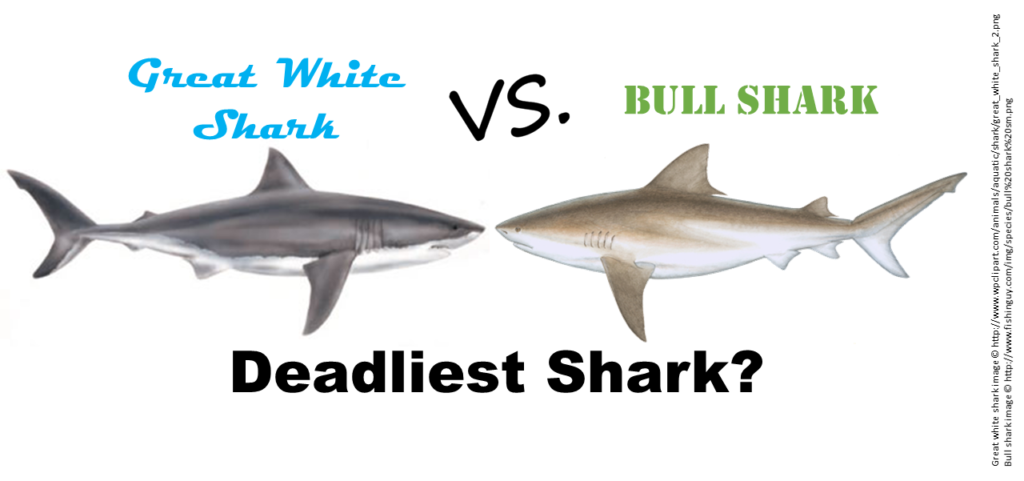
Deadliest shark: Great white vs. bull?

15 facts about sharks
1.) Sharks are divided into 8 orders.
2.) Sharks are again divided into 34 families.
3.) There are over 360 shark species.
4.) The largest meat eating shark is the great white shark (37 feet).
5.) The largest shark is the whale shark (and largest fish overall), a filter feeder.
6.) The second largest shark (and fish) is also a filter feeder, the basking shark.
7.) Dwarf laternfish (7 1/2 -8 inches), the spined pygmy shark (8 inches) and the pygmy ribbontail catshark (7-7 1/2/ inches) are among the smallest of the sharks.
8.) The fastest swimming fish are the mako and blue sharks which can swim upwards to 60 miles per hour.
9.) The shark with the strongest bite is the dusky shark with a jaw of 132 pounds of force.
10.) The dogfish is the most common shark species.
11.) The deepest diving fish is the Portuguese shark.
12.) The shark with the longest migration has been found to be the blue shark.
13.) Megalodon was an ancient shark that may have been 2 or 3 times as long as a great white shark.
14.) Megalodon means “giant tooth”.
15.) The fossilized teeth of a megalodon are as large as an adult’s hand.
Do sharks have bones?
No sharks do not have bones.
Sharks do have skeletons, but they’re made of cartilage rather than bone. Cartilage is the flexible stuff in the tip of your nose. A cartilage skeleton has its advantages. It’s light, flexible, and it heals faster than bone. In some spots though, sharks need a little extra strength. Their skulls, jaws, and spine are fortified with calcium salts, making them much thicker and stronger. Can you think of why a shark would need strong jaws, skulls, and spines?
by Jim Wharton
Vice President, Education Division, Director, Center for School and Public Programs, Mote Marine Laboratory
Do you have another great question? Email info@beachchairscientist.com.







What people are saying …